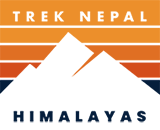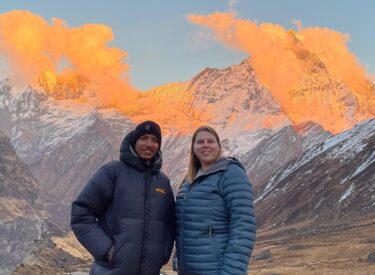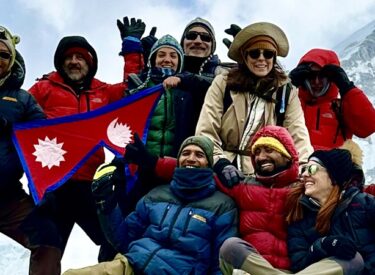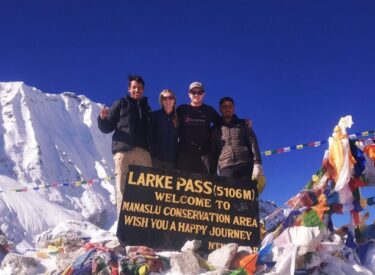Langtang Valley Trek
based on 152 reviewsOverview of Langtang Valley Trek
The Langtang Valley Trek, conveniently close to Kathmandu, Nepal, beckons with its captivating blend of culture, natural beauty, and accessibility. Immerse yourself in the cultural tapestry of the Tamang people, discover the mystical Kyanjin Gompa, and ascend to awe-inspiring viewpoints like Kyanjin Ri and Tserko Ri, where the grandeur of the Langtang mountain range unfolds before your eyes.
Whether you’re an experienced trekker or new to Himalayan exploration, this trek offers a transformative journey through Nepal’s picturesque landscapes and vibrant traditions. Experience the Langtang Valley Trek and create unforgettable memories amid the majestic Himalayas.
Itinerary of Langtang Valley Trek
Touching down at Tribhuvan International Airport in Kathmandu marks the beginning of an exhilarating adventure in Nepal.
As you disembark in the heart of the country’s vibrant capital, you’ll immediately sense the buzz and excitement that Kathmandu offers.
This city is not just Nepal’s political and cultural centre; it’s also the starting point for many remarkable Himalayan treks, including your awaited journey to the Langtang Valley.
From the moment you step off the plane, the unique blend of ancient traditions and modern life in Kathmandu will captivate you.
The city is a bustling hub, filled with historical sites, colourful markets, and the warm hospitality of the Nepalese people.
As you embark on your trekking adventure, Kathmandu provides the perfect backdrop for acclimatization and exploration.

The anticipation builds as you gear up for the Langtang Valley Trek. Nestled just a few hours’ drive from Kathmandu, the Langtang region offers a trekking experience filled with stunning landscapes, rich cultural insights, and the serene beauty of the Himalayas.
Your arrival at Tribhuvan International Airport is just the beginning of what promises to be a memorable and transformative trekking experience in Nepal.
As you prepare for the thrilling Langtang Valley Trek, take a day to immerse yourself in the vibrant culture of Kathmandu.
This bustling city, rich in history and tradition, offers many captivating experiences as captivating as the trek. While you explore and absorb the essence of Nepal’s capital, rest assured that we will diligently handle all the logistics and permits required for your trek.
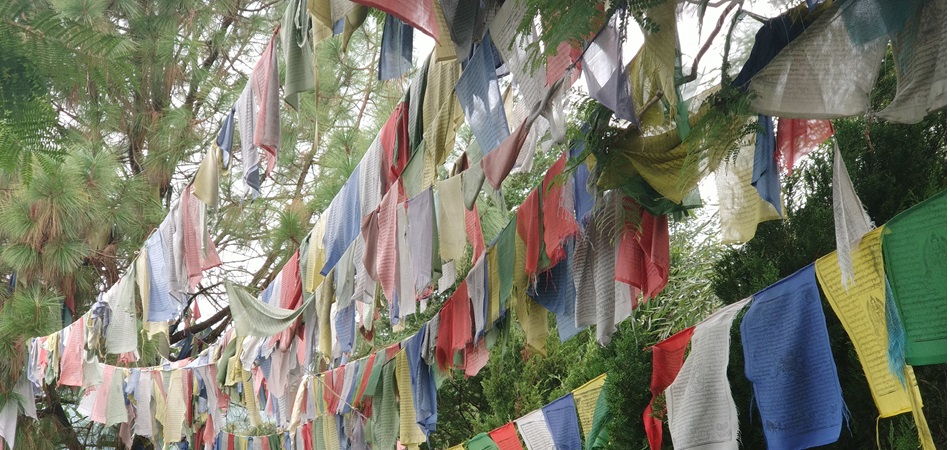
In Kathmandu, you’re not just a trekker gearing up for an adventure but our esteemed guest. We invite you to delve into the city’s cultural treasures.
Visit the historic Durbar Square, marvel at the ancient temples, and wander through the lively streets and markets. This cultural immersion in Kathmandu will enrich your overall experience in Nepal and provide a serene contrast to the tranquillity of the Himalayan trails you’ll soon explore.
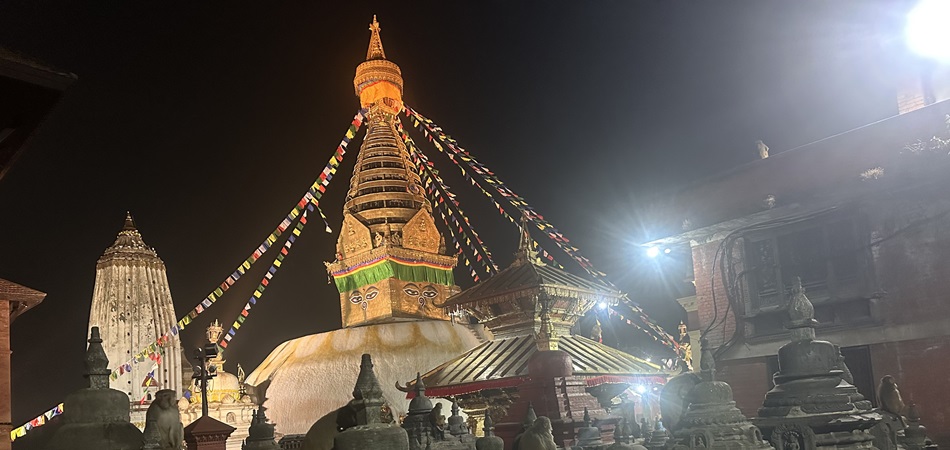
Your adventure in Nepal is about more than just the trails; it’s about experiencing the heart and soul of this beautiful country.
As you enjoy Kathmandu’s charm, we’ll ensure that everything is set for a smooth and memorable journey to the Langtang Valley. Your only task is to enjoy and explore – we’ll take care of the rest.
Embarking on your Langtang Valley Trek starts with an enchanting scenic drive from Kathmandu to Syabrubesi, the threshold to the Langtang region’s wonders.
This journey is a prelude to your trekking adventure in Nepal, offering a first-hand view of the country’s diverse landscapes.
As you leave Kathmandu’s bustling capital, the urban scenery gradually gives way to rural tranquillity, marking the beginning of your trek to Langtang.
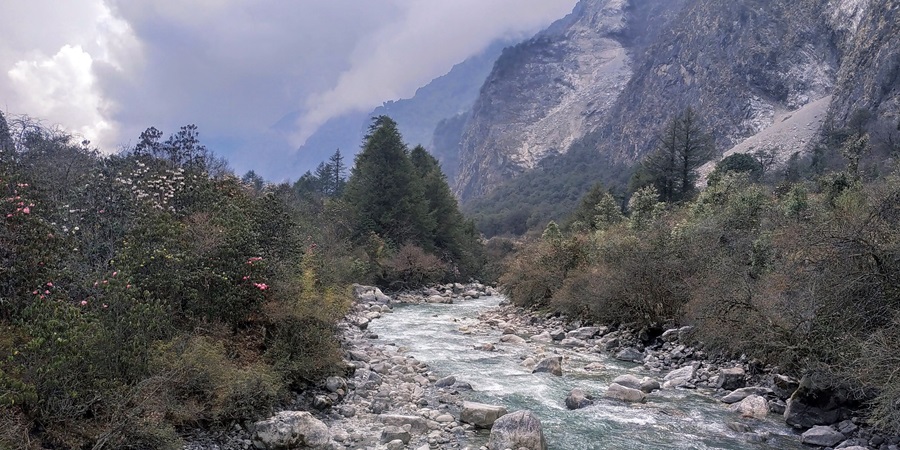
The drive to Syabrubesi is a captivating experience, where every twist and turn of the winding roads brings a new and breathtaking panorama.
Your anticipation for the Langtang trek will heighten as you witness the majestic Himalayan peaks emerging in the distance.
These towering mountains, a prominent feature of the Langtang Valley trekking experience, gradually become more apparent, setting the tone for the adventure that awaits.
This drive is more than just a route; it’s an integral part of your journey, seamlessly blending Kathmandu’s cultural vibrancy with the Langtang Valley’s natural splendour.
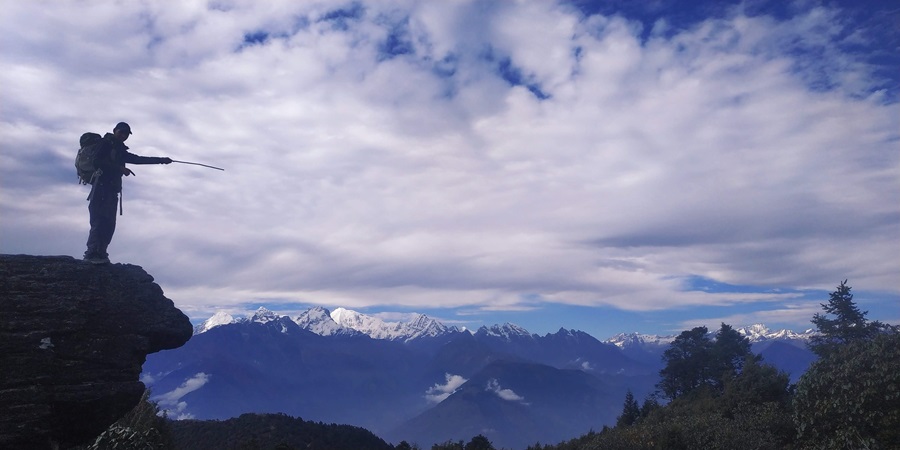
As you approach Syabrubesi, you’ll find yourself transitioning from the role of a traveller to that of a trekker, ready to explore the incredible beauty of the Langtang region.
As you begin your journey from Syabrubesi, the starting point of your Langtang Valley Trek, the anticipation builds with each step towards Lama Hotel.
This initial leg of your trekking in Nepal adventure is where you indeed start to connect with the mountain wilderness.
Starting in Syabrubesi, your boots will meet the rugged trails, signalling the commencement of an unforgettable trek.
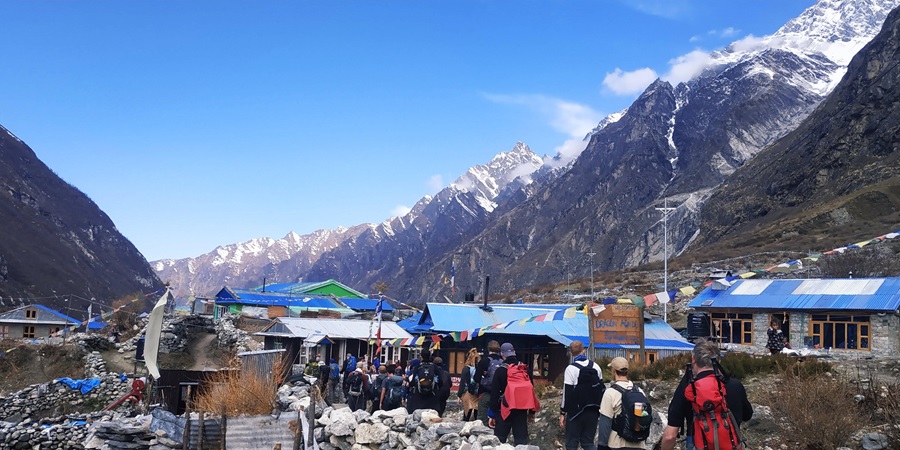
The path from Syabrubesi to Lama Hotel is as diverse as it is beautiful, showcasing a dynamic change in the landscape that captivates every trekker.
As you progress, the bustling village atmosphere of Syabrubesi gradually fades, replaced by the serene and untouched beauty of the Langtang region.
The trail meanders through lush forests, alongside flowing rivers, and past scenic landscapes, offering a harmonious blend of natural wonders.
This trek towards Lama Hotel is more than just a hike; it’s an immersive experience in the heart of the Himalayas.
It’s where you’ll feel a deeper connection with nature, with every step taking you further into the tranquil embrace of the mountains.
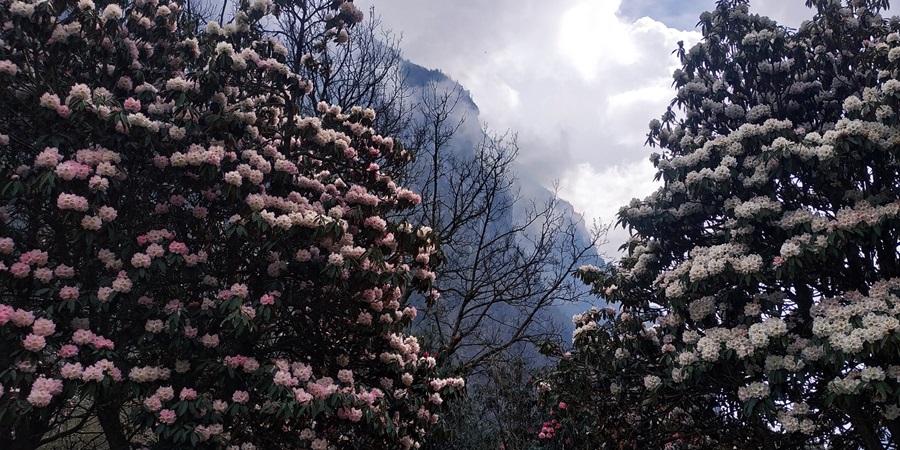
The journey to Lama Hotel sets the tone for the rest of your Langtang Valley Trek, marking the start of an adventure filled with breathtaking views, rich cultural insights, and the sheer joy of trekking in one of Nepal’s most beautiful regions.
Langtang Village, nestled amidst the pristine landscapes of the Langtang Valley, isn’t just a stop on your trek; it’s a portal to authentic Nepali culture.

This picturesque village not only showcases stunning natural beauty but also provides a priceless insight into the lives and traditions of the local Tamang community.
As you venture deeper into the Langtang region, Langtang Village welcomes you with open arms. Here, you’ll find more than just awe-inspiring views; you’ll discover the heart and soul of the Himalayas.
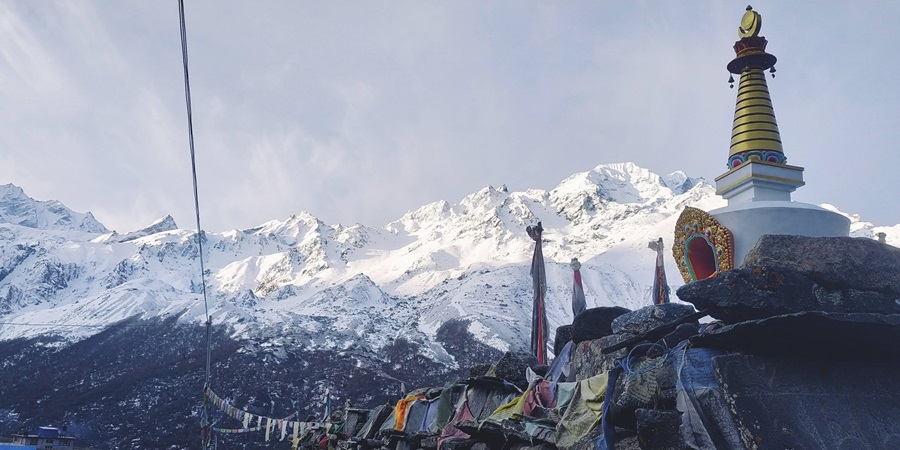
The Tamang people, known for their rich culture and warm hospitality, call this village home and are eager to share their way of life with trekkers like you.
Exploring Langtang Village offers a unique opportunity to engage with the Tamang community. You’ll have the chance to interact with locals, learn about their customs, and even partake in their daily activities.
Whether savouring traditional Tamang meals or witnessing cultural rituals, every moment in Langtang Village is a trekkers’ delight.
Beyond the breathtaking landscapes, the cultural richness of Langtang Village makes your Langtang Valley Trek an unforgettable experience.
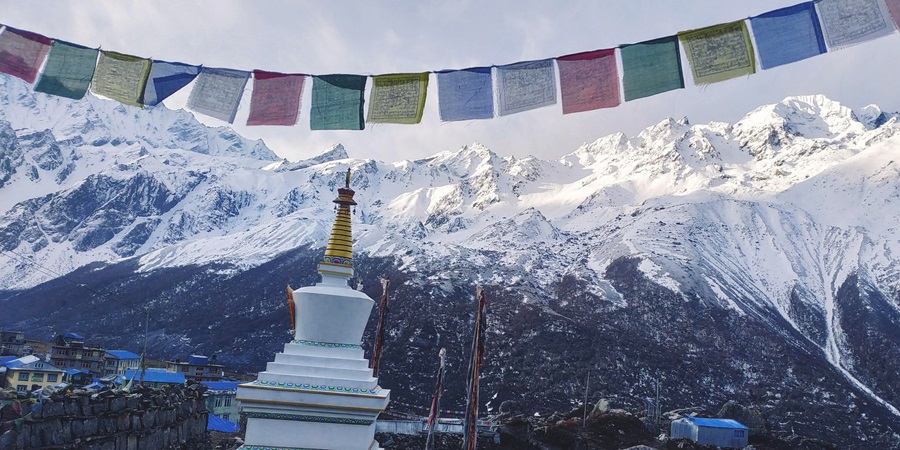
It’s a place where nature and culture intertwine, leaving you with memories beyond the scenic beauty and immersing you in the heartwarming embrace of Nepal’s authentic heritage.
While trekking is undoubtedly a physical adventure, it often transforms into a spiritual journey, and Kyanjin Gompa is a place where this transformation can be truly profound.
This sacred monastery, nestled within the Langtang Valley, promises to infuse your trek with a touch of spirituality and a deeper connection to the Himalayan landscape.
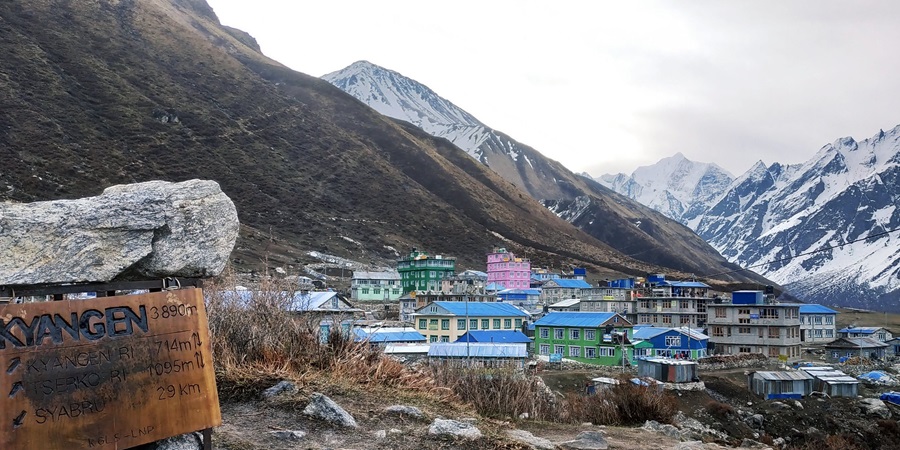
Kyanjin Gompa is more than just a structure; it’s a sanctuary of peace and reflection.
As you approach this spiritual haven, you’ll feel a sense of tranquillity enveloping you. The monastery believed to be around 280-300 years old, holds within its walls the stories and prayers of generations of monks and pilgrims.
Visiting Kyanjin Gompa offers trekkers a chance to pause and immerse themselves in the spiritual essence of the Himalayas.
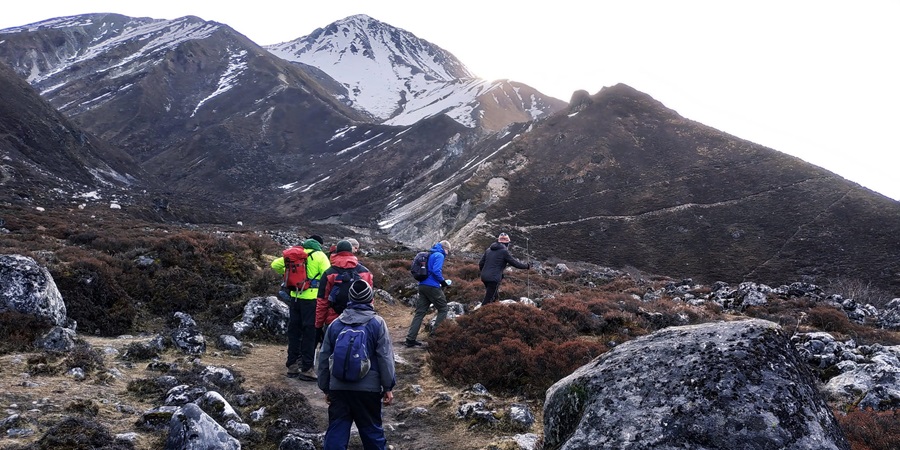
Whether you participate in prayer sessions, soak in the serene surroundings, or take a moment for quiet contemplation, the experience is deeply enriching.
The spiritual significance of Kyanjin Gompa extends beyond its religious importance; it’s a reminder that treks like the Langtang Valley Trek are not just about physical challenges but also inner exploration. It’s where the mountains inspire awe and a profound sense of connection to something greater.
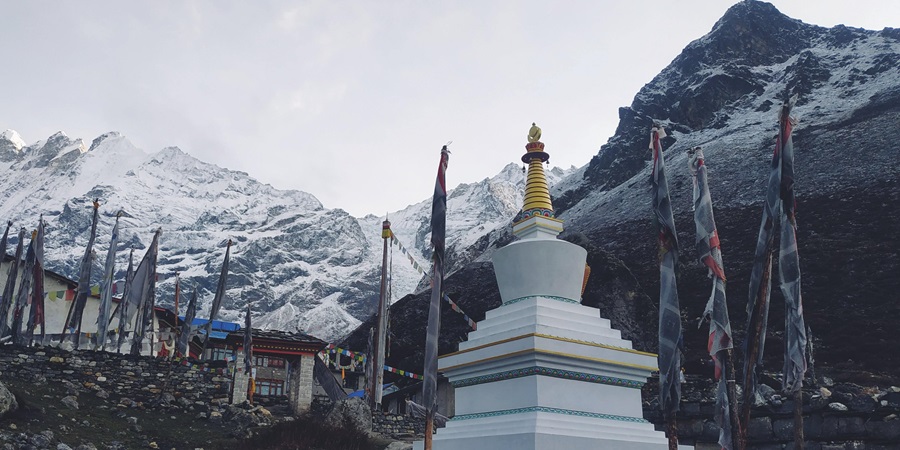
So, as you embark on your Langtang Valley Trek, remember that it’s an opportunity to explore nature’s wonders and embark on a spiritual journey with Kyanjin Gompa as a guiding light along the path.
While the Langtang Valley Trek is an adventure, there’s an opportunity to take your experience to new heights. Pause your trekking journey to ascend to the awe-inspiring viewpoints of Tserko Ri and Kyanjin Ri, where panoramic views await, leaving you with memories that inspire both awe and Instagram envy.
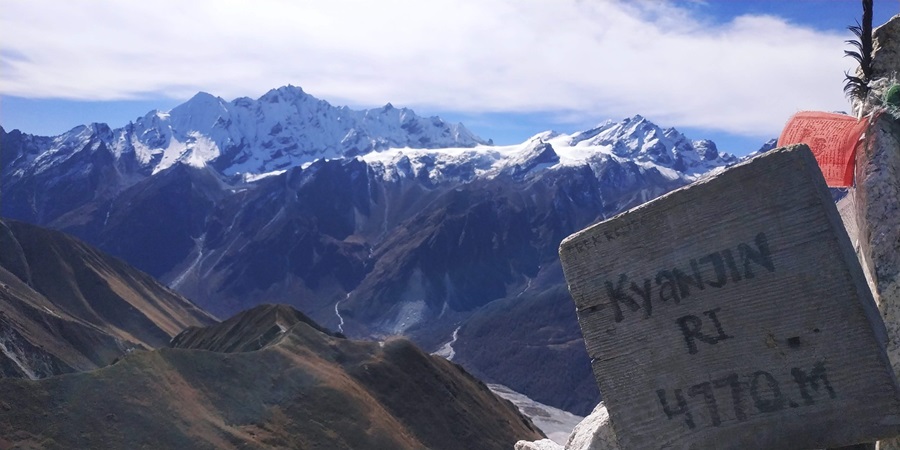
Tserko Ri and Kyanjin Ri are both viewpoints and gateways to the heavens. These lofty vantage points offer vistas that seem straight out of dreams, where the grandeur of the Langtang mountain range unfolds before your eyes. Each step of the ascent is a promise of breathtaking beauty.
Standing atop Tserko Ri or Kyanjin Ri, you’ll find yourself amidst a 360-degree panorama of snow-capped peaks, rolling hills, and pristine valleys. The sense of accomplishment and wonder is unparalleled as you soak in the outstanding natural beauty surrounding you.
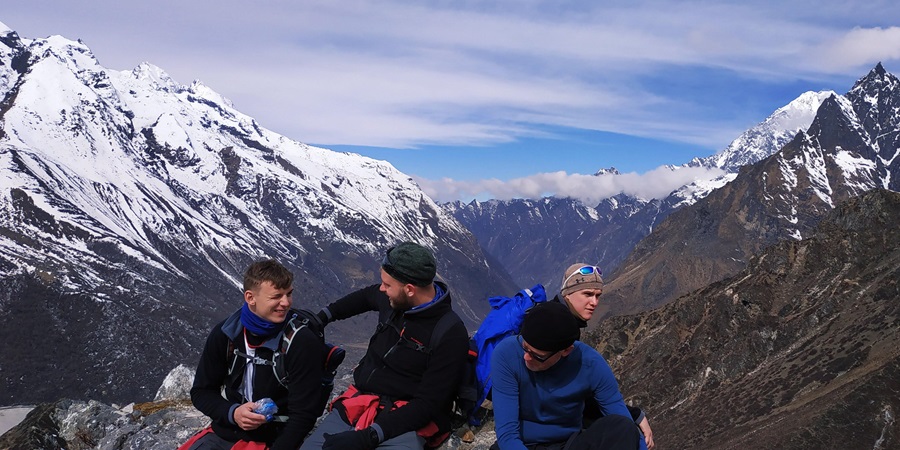
These viewpoints are not only a treat for your eyes but also a testament to the grandeur of the Himalayas. Whether you’re capturing the moment for your Instagram feed or simply etching it into your memory, the views from Tserko Ri and Kyanjin Ri are the stuff of trekkers’ dreams.
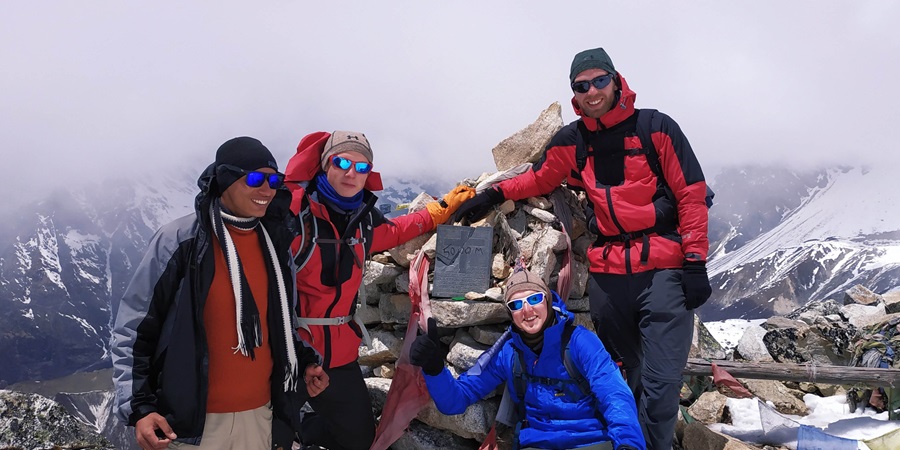
So, take a break from your trekking routine, lace up your hiking boots, and ascend to these heavenly heights. The memories you create at Tserko Ri and Kyanjin Ri will be cherished long after your Langtang adventure ends.
As you return to Lama Hotel during your Langtang Valley Trek, take a moment to savour the valley’s unique flora and fauna once more. In trekking, sometimes the true beauty of the journey lies in appreciating what you’ve passed by.
The return journey is a chance to reacquaint yourself with the Langtang Valley’s natural wonders. The lush forests, vibrant rhododendrons, and the occasional glimpse of elusive red pandas are all part of the tapestry of this remarkable landscape.
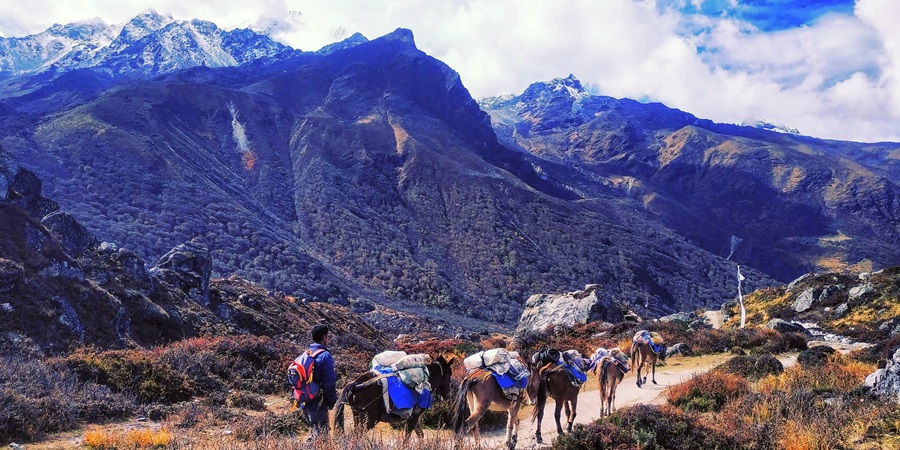
While the initial trek towards Lama Hotel was filled with excitement and anticipation, the journey back allows you to view familiar sights with fresh eyes. It’s an opportunity to slow down, breathe in the crisp mountain air, and truly connect with the environment around you.
Nature has gradually revealed its secrets, and the Langtang Valley is no exception. As you retrace your steps, you may notice subtle details you missed on the way up, from the intricate patterns of leaves to the melodic songs of Himalayan birds.
So, relish the journey as you trek back to Lama Hotel, for in this return lies the chance to appreciate the valley’s beauty from a new perspective.
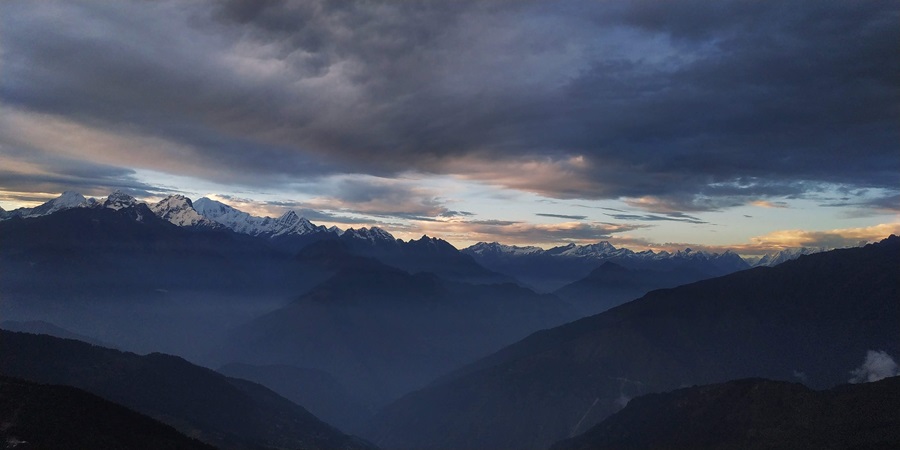
It’s a reminder that the Langtang Valley is not just a destination but a living, breathing masterpiece of nature that deserves to be celebrated at every turn.
As you descend towards Dhunche, your heart is undoubtedly full of cherished memories, and your camera is brimming with photos that capture the essence of your Langtang Valley Trek.
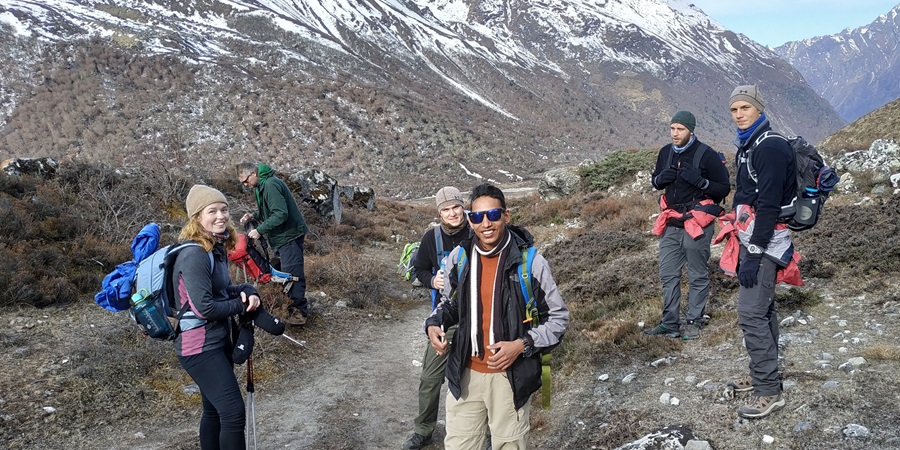
It’s a journey that has left an indelible mark on your soul, and as you make your way down, don’t be surprised if you feel a profound sense of achievement; after all, you’ve earned it!
The trail back to Dhunche is more than just a physical descent; it’s a reflective journey through the moments that have defined your adventure.
Each step carries the echoes of laughter shared with fellow trekkers, the tranquillity of sacred monasteries, and the awe-inspiring vistas that leave you breathless.
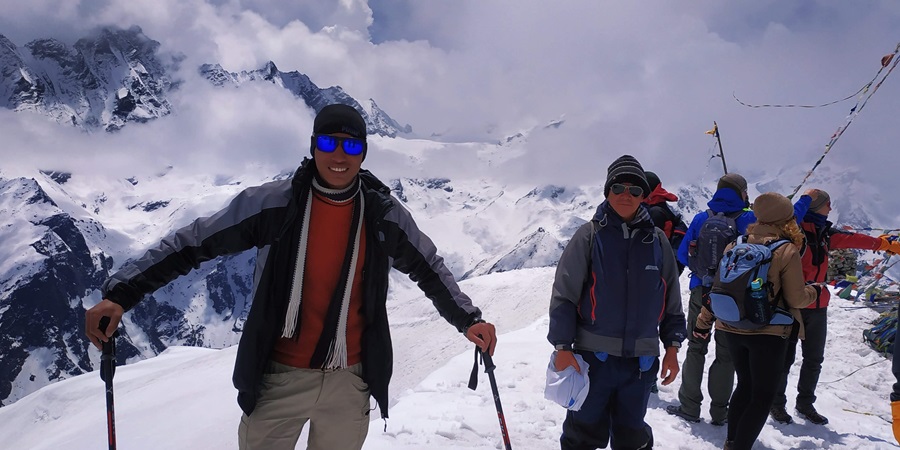
As you walk among the towering trees and the gushing rivers, take a moment to soak in the beauty surrounding you.
The Langtang Valley has a way of etching itself into your heart, and every glance at the landscape reminds you of your incredible experiences.
While the physical challenges of the trek may have been demanding, the sense of accomplishment is undeniable.
You’ve ventured into the heart of the Himalayas, embraced the culture of the Tamang people, and stood atop majestic viewpoints. It’s a testament to your determination and spirit.
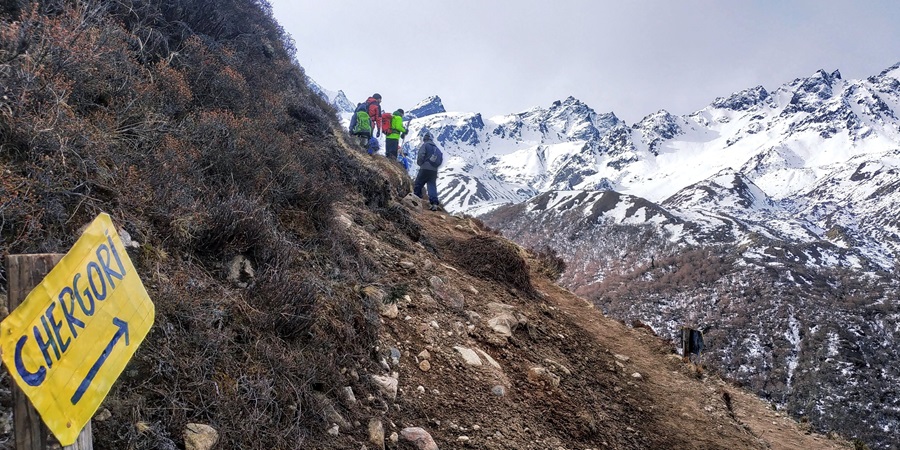
So, with a heart full of memories and a camera full of photos, continue your descent to Dhunche.
The sense of achievement that washes over you is well-deserved, for you’ve conquered the trails and forged a lasting connection with the Langtang Valley that will stay with you forever.
As you bid farewell to the Langtang Valley and return to Kathmandu, it’s time to trade your trusty trekking boots for souvenirs that will remind you of the incredible journey you’ve undertaken. While the trek may end, the memories you’ve created will last a lifetime.
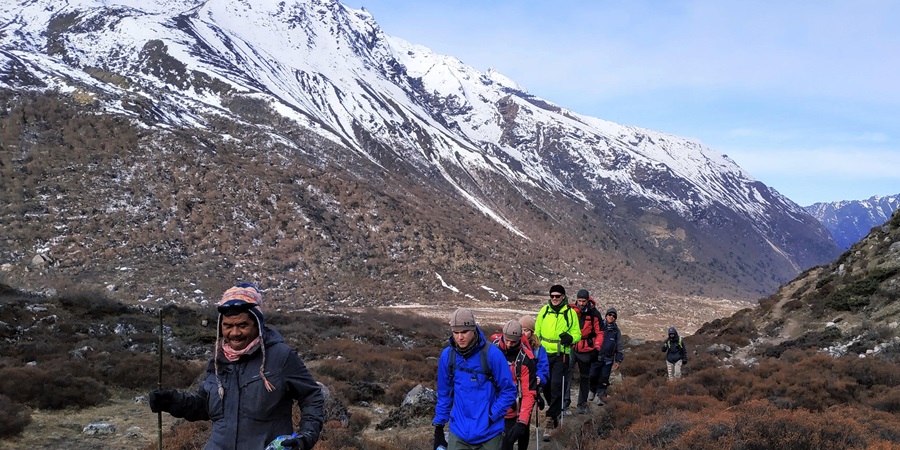
The return to Kathmandu marks the transition from the mountains’ solitude to the city’s bustling energy. As you navigate the streets, you’ll find countless shops and markets offering an array of souvenirs and mementoes, each with its own story to tell.
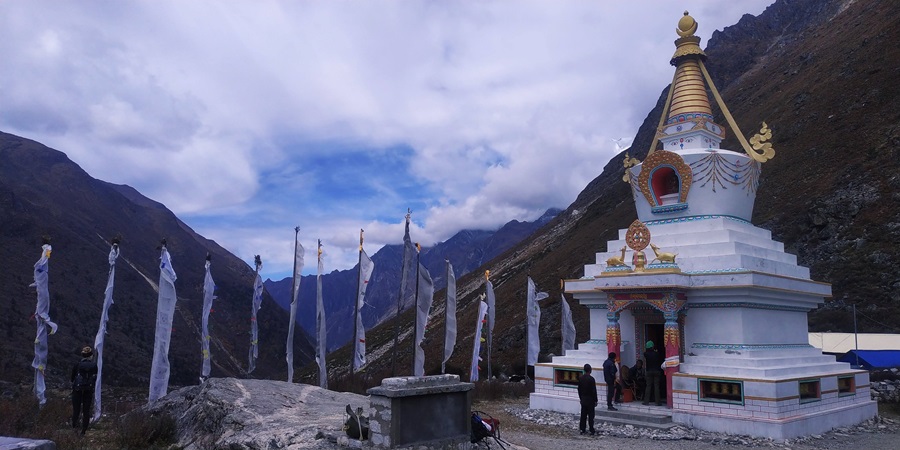
Whether it’s intricately crafted handicrafts, vibrant textiles, or traditional Nepali artefacts, the options for souvenirs are as diverse as the landscapes you’ve encountered during your trek. Each item you take home becomes a tangible link to the Langtang Valley’s experiences, people, and culture.
While the physical trek may be over, the journey in your heart and mind is far from complete. The memories of stunning vistas, warm hospitality, and the camaraderie of fellow trekkers will enrich your life long after you’ve returned home.
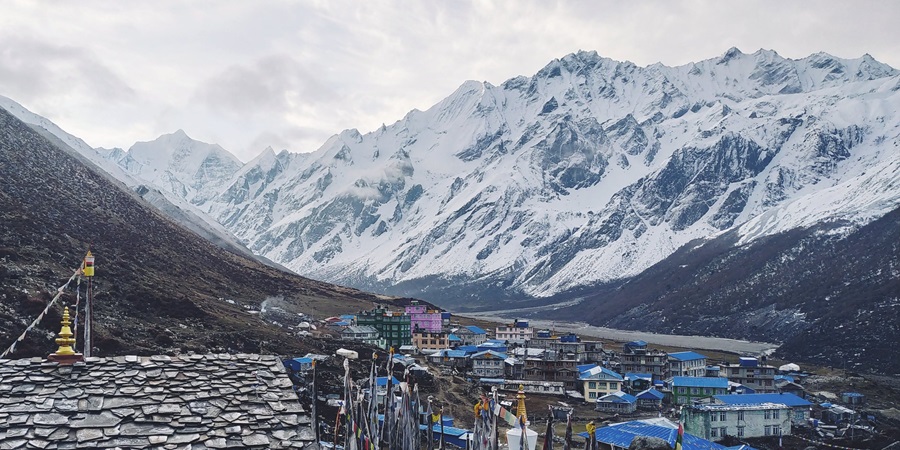
So, as you explore the markets of Kathmandu, select your souvenirs with care, for they are not just trinkets but cherished reminders of a transformative adventure.
The Langtang Valley Trek may be ending, but the memories you carry with you are a testament to the enduring spirit of exploration and discovery.
As your Langtang Valley Trek adventure comes to a bittersweet end and you go to the airport for your onward journey, remember that this is not goodbye; it’s a heartfelt see-you-later.

The majestic mountains that have watched over your expedition are eternal, and we’re sure they’ll call you back for another rendezvous in the future.
Leaving the Langtang Valley behind is undoubtedly a poignant moment. The memories of the trek, the breathtaking landscapes, and the bonds formed with fellow trekkers will remain etched in your heart. It’s a chapter of your life that you’ll revisit often.
As you board your flight, know that the mountains are not just a destination but a part of your soul now. They have left an indelible mark, and their allure will draw you back to their lofty peaks, meandering trails, and spiritual sanctuaries.
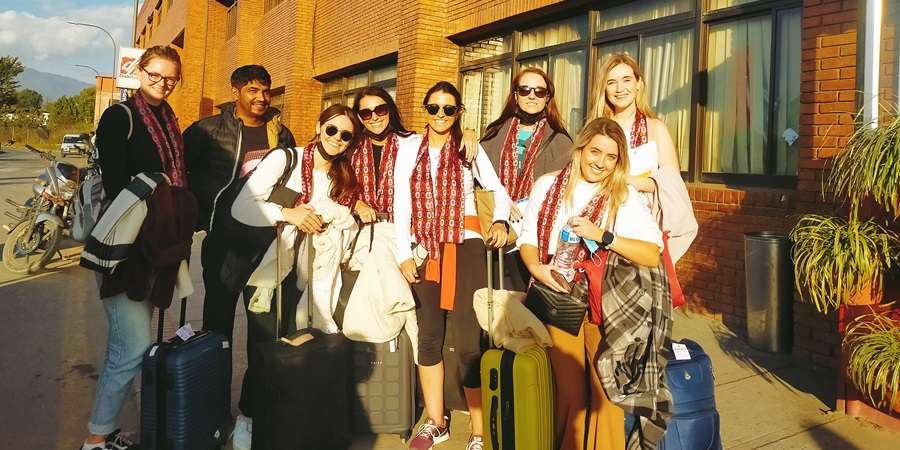
The Langtang Valley will always be here, waiting to embrace you again. Whether it’s to conquer new trails, reconnect with familiar faces, or bask in the serenity of the Himalayas, the mountains will welcome you with open arms.
So, as you bid farewell to this extraordinary journey, carry the Langtang Valley with you in your heart. The mountains are patient, and they’ll be here whenever you’re ready to answer their call for another unforgettable rendezvous until we meet again.
Added Insights
Langtang Valley Trek Inclusions
What's Included?
- Kathmandu Airport Pickup: Your Langtang Valley Trek begins right from Kathmandu airport, where our team will pick you up and transfer you to your hotel.
- 3 Nights Hotel in Kathmandu with Breakfast: Enjoy a comfortable 3-night stay in Kathmandu, complete with breakfast to energize you for the upcoming adventure.
- Teahouse Accommodation During Trekking: Immerse yourself in authentic Nepali culture with teahouse accommodation as you trek through the picturesque Langtang Valley.
- Three Meals During the Trek: Never trek on an empty stomach. Our Langtang Valley Trek package includes breakfast, lunch, and dinner during the trekking days.
- Transportation to and from Syabrubesi by Local Bus: Your journey from Kathmandu to the trek’s starting point in Syabrubesi and back is seamlessly arranged.
- Entrance Fees for Sightseeing/Monument Visits: All entrance fees for sightseeing in Kathmandu and Langtang National Park are included, ensuring you won’t miss any cultural and natural wonders.
- Experienced, English-speaking, and Government-Licensed Trek Guide: Trek confidently, guided by a government-licensed, English-speaking trek guide who will be with you throughout your Langtang Valley Trek.
- Porter Services: Our trekking package includes a porter (1 porter for two trekkers) to carry your gear, ensuring a more comfortable trekking experience.
- Down Jacket and Sleeping Bag: Gear up for chilly Langtang Valley nights with complimentary down jackets and sleeping bags for your trek.
- Necessary Paperwork and Trekking Permits: Forget the bureaucracy; we handle all the trekking permits, including the National Park Permit and TIMS card, so that you can focus on the adventure.
- Medical Kit: Your safety is our priority. We provide a medical kit to address any minor health issues that may arise during your Langtang Valley Trek.
What's Excluded?
- International Airfare: The cost of international flights to and from Nepal is not part of the trek package and should be arranged separately by travelers.
- Nepalese Visa Fee: Travelers are responsible for the Nepalese visa fee required for entry into Nepal, which is not covered in the package.
- Travel and Rescue Insurance: It’s essential to acquire travel and rescue insurance independently to ensure safety during the trek. This insurance is not included in the package.
- Extra Night Accommodation in Kathmandu: If you plan to extend your stay in Kathmandu beyond the included nights, additional accommodation charges apply and are not part of the package.
- Lunch and Dinner in Kathmandu: While breakfast is provided in Kathmandu, expenses for lunch and dinner are not included in the package.
- Private Transportation to and from Syabrubesi: The standard package includes local bus transportation. Additional charges will apply if you prefer private transport (please request this when booking).
- Personal Expenses: Expenses like phone calls, laundry, bar bills, battery recharge, extra porters, Wi-Fi charges, bottled or boiled water, and showers are not covered in the Langtang Valley Trek package.
- Tipping: Tips for the guide, porter, and other staff are not included and should be provided at your discretion.
Complimentary
- Sleeping Bags: As part of our Langtang Valley Trek package, we provide high-quality sleeping bags. These sleeping bags are essential for a comfortable night’s rest during your trek. They are designed to keep you warm on chilly mountain nights, ensuring you wake up refreshed and ready to explore the breathtaking landscapes of Langtang Valley.
- Trekking Poles: We offer complimentary trekking poles to assist you during your trekking journey. Trekking poles provide stability and support while navigating the sometimes rugged and uneven terrain of the Langtang region. They reduce strain on your knees and joints, making your trek more enjoyable and comfortable.
- Duffle Bags: We understand the importance of having a reliable bag to carry your belongings. That’s why we provide duffle bags as part of our package. These durable bags are perfect for storing your essentials and can be easily carried by porters, ensuring you have everything you need while trekking without carrying a heavy backpack.
- Trek Completion Certificate: At the end of your Langtang Valley Trek, we present you with a trek completion certificate. This certificate serves as a memento of your accomplishment and the incredible journey you’ve undertaken. It’s a tangible reminder of the memories you’ve created in the Himalayas.
- 24-Hour Emergency Support: Your safety is our top priority. That’s why we offer 24-hour emergency support throughout your trek. In any unexpected situations or emergencies, our team is just a call away to provide assistance and ensure your well-being throughout the trek.
Ultimate Guide to Langtang Valley Trek
Best Season to Trek Langtang Valley: Choose the Ideal Time for Your Adventure
The Langtang Valley Trek, a mesmerizing journey through the heart of the Himalayas, offers an unforgettable experience for avid trekkers. To ensure the most enjoyable and safe adventure, choosing the best season for trekking to Langtang is crucial. The trek to Langtang depends highly on weather conditions, which can significantly influence visibility and trail difficulty.

Spring: A Season of Rejuvenation
Spring, from March to May, is often considered the ideal season for the Langtang Valley Trek. This is when the Langtang region undergoes a magnificent transformation, making trekking to Langtang particularly enchanting. The trails awaken with colours as rhododendrons and other flora bloom in abundance, creating a picturesque landscape for trekkers.
The clear weather further enhances the Langtang trek during these months, providing excellent visibility. This particularly benefits trekkers aiming to reach Kyanjin Ri’s and Tserko Ri’s famed viewpoints. From these elevations, one can enjoy the mesmerizing views of the surrounding peaks and valleys, with the clear spring skies offering unobstructed vistas.

Moreover, the pleasant spring climate makes Langtang Valley trekking a joyous experience. The moderate temperatures are perfect for hiking, allowing trekkers to explore the region’s natural beauty and cultural richness comfortably. Spring in Langtang Valley is not just a season; it’s a celebration of nature’s revival, offering trekkers a unique and unforgettable adventure.
Autumn: The Peak Season of Langtang Valley Trek
Autumn, spanning September to November, is often touted as the prime time for the Langtang Valley Trek. This season, known for its post-monsoon clarity, clears the air of dust and haze, resulting in some of the most spectacular mountain views imaginable. Trekking to Langtang during this time means experiencing the Himalayas in their full majesty.
The monsoon’s aftermath transforms the Langtang region, making it an ideal period for Langtang valley trekking. The atmosphere is notably more transparent, offering trekkers unparalleled views of the surrounding peaks. This clarity is a boon for those aiming to reach notable high points, such as Kyanjin Ri and Tserko Ri, known for their panoramic views.

Moreover, the weather conditions during autumn are highly conducive for the Langtang trek. The stability of the weather and the moderate temperatures combine to create the perfect trekking environment. These conditions are particularly favourable for those embarking on the trek to Langtang for the first time, as they offer a comfortable and enjoyable hiking experience.
Autumn is the peak season for trekking in the Langtang Valley. The clear skies, stable weather, and moderate temperatures enhance the trekking experience and add a layer of safety and comfort. Whether you’re a seasoned trekker or a first-time visitor, the Langtang Valley Trek in autumn promises an exhilarating and memorable adventure.
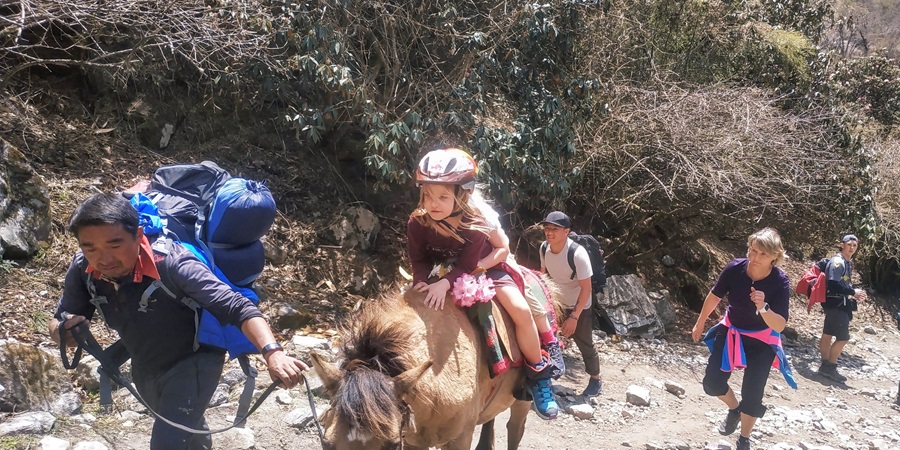
Winter: A Challenging Yet Serene Time for the Langtang Valley Trek
The winter months of December to February present unique challenges and rewards for those embarking on the Langtang Valley Trek. This season transforms the Langtang trek into a more demanding adventure due to the presence of snowfall and the drop in temperatures. However, trekking to Langtang in winter can be an enriching experience for those prepared to face these challenges.
The winter landscape in the Langtang Valley is nothing short of breathtaking. The trekking trails and surrounding peaks are enveloped in a serene blanket of snow, creating a tranquil and picturesque environment. This snow-covered setting offers a different perspective of the valley and a sense of solitude that is hard to find in other seasons.
Despite the colder climate, the Langtang Valley Trek has a unique allure during winter. The smaller number of trekkers on the trails leads to a more solitary experience, allowing for a deeper connection with nature. For those seeking a peaceful trek, Langtang Valley trekking in winter offers a quiet retreat into the Himalayas.

It’s important to note that winter trekking requires proper preparation and gear to ensure safety and comfort. The colder temperatures and potential for heavy snowfall mean that trekkers should be well-equipped and possibly consider the guidance of experienced guides.
Monsoon: A Lush yet Challenging Time for the Langtang Valley Trek
The monsoon season, extending from June to August is often considered the least recommended time for the Langtang Valley Trek. This period is marked by heavy rainfall, significantly impacting the Langtang region’s trekking conditions. The frequent downpours can lead to landslides and slippery trails, presenting considerable challenges for trekkers.
However, trekking to Langtang during the monsoon can be a unique and rewarding experience for those prepared to navigate these challenges. This season brings out the lushness of the Langtang Valley, with the rain nurturing the flora and transforming the landscape into a vibrant green haven. The waterfalls and rivers in the area are at their most majestic, adding to the beauty of the trek.
Additionally, trekking in Langtang during the monsoon means encountering fewer crowds. This can offer a more solitary experience, allowing trekkers to immerse themselves more deeply in the natural surroundings and the local culture.

It’s crucial for trekkers choosing to embark on the Langtang Valley Trek during monsoon to be well-prepared. This includes having the right gear, such as waterproof clothing and sturdy, non-slip hiking boots, and being aware of the weather conditions.
Trekking with a local guide is also advisable, as they can provide valuable insights and assistance in navigating the trails safely. While the monsoon season presents challenges for Langtang Valley trekking, it also offers unique rewards. The lush landscapes and the opportunity for a more peaceful trekking experience make it an appealing option for well-prepared and adventurous trekkers.
Essential Permits for Your Langtang Valley Trek
Having all the necessary permits is crucial before you embark on your unforgettable trek to Langtang. Trekking in Nepal requires specific documentation, especially in areas like the Langtang Valley.
These permits are vital for your safety during the Langtang trek and for conserving these protected regions. Here’s an overview of what you need for your Langtang Valley trekking adventure.
Langtang National Park Permit
Your journey through Langtang National Park, a highlight of trekking to Langtang, necessitates an entry permit. This permit is a cornerstone for exploring and conserving the park’s natural splendour.
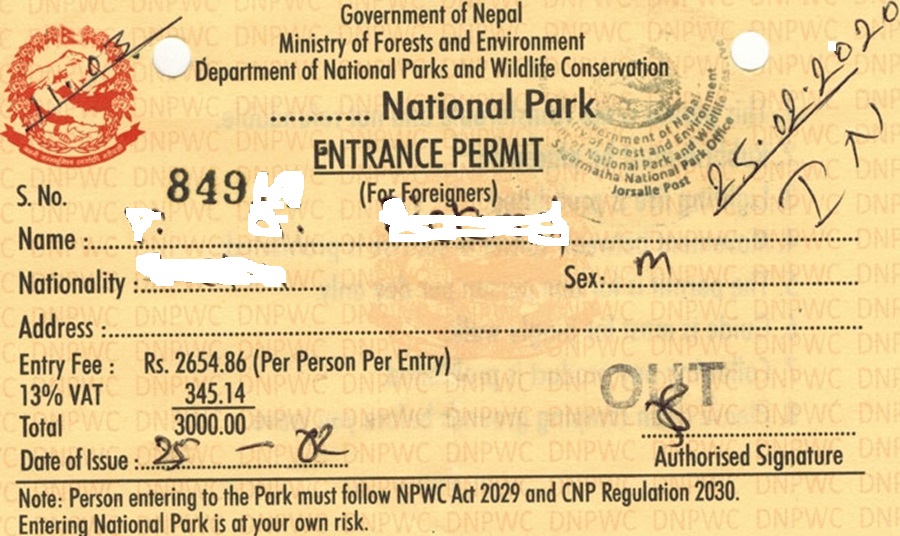
TIMS Card (Trekkers’ Information Management System)
In addition to the Langtang National Park Permit, securing a TIMS Card is essential. This card is a key safety feature for anyone on the Langtang trek, enabling authorities to monitor and assist trekkers efficiently.
Securing these permits ensures that your Langtang Valley Trek is not only memorable but also responsible, adhering to the regulations that protect and maintain the beauty and safety of the region.
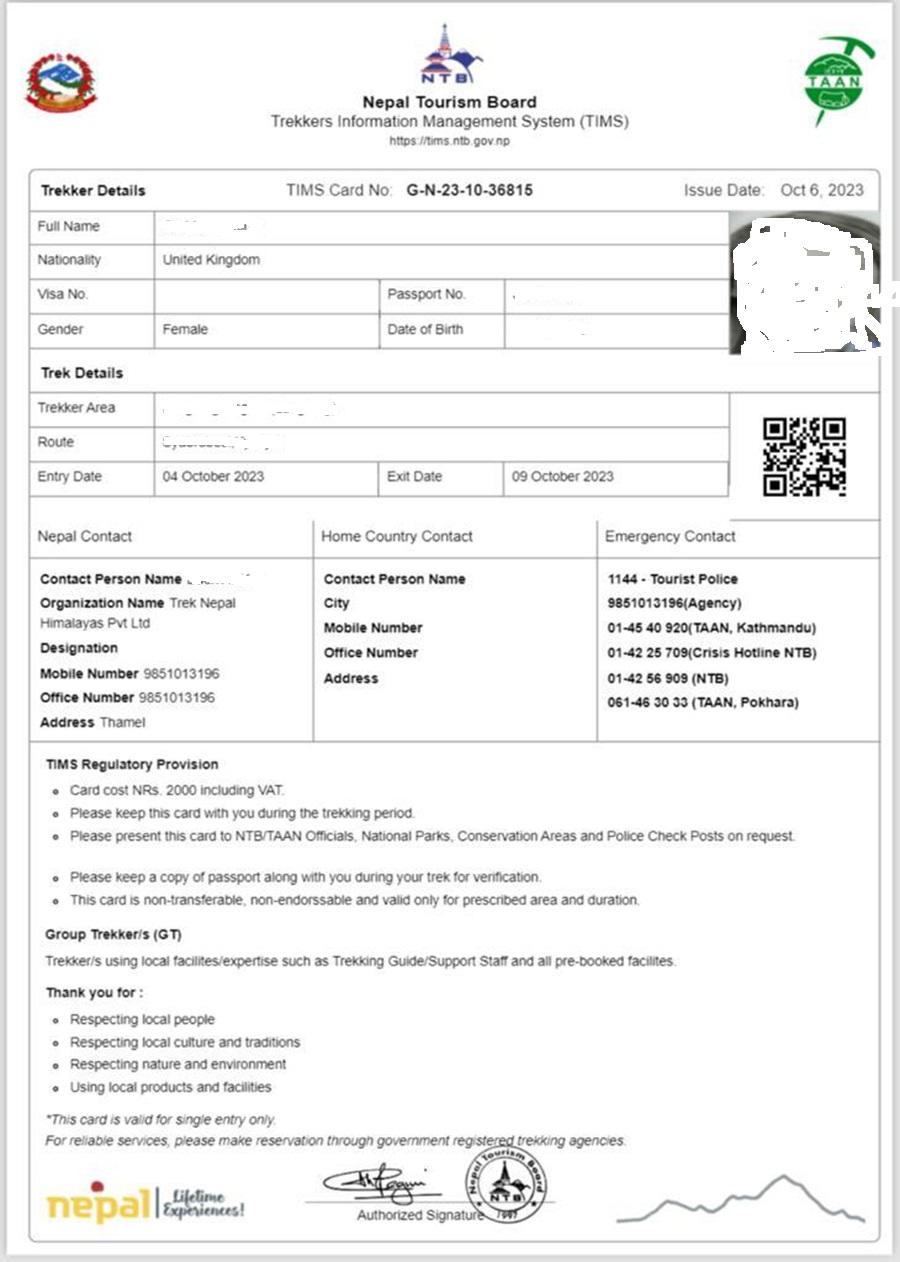
Accommodation Options During Your Langtang Valley Trek
Embarking on the Langtang Valley Trek, a highlight in trekking to Langtang, brings the excitement of exploration and the question of where you’ll rest each night.
Understanding the accommodation options is crucial for your trekking in Nepal adventure. Here’s a guide to your lodging choices on your Langtang trek, ensuring you’re well-prepared for this life-changing journey.
Teahouses: The Heart of the Langtang Trek Experience
Teahouses are the quintessential form of accommodation throughout the Langtang Valley Trek. Offering basic yet cosy lodging, these teahouses provide the essentials: comfortable bedding, warm blankets, and communal dining areas.
While they may not offer luxury, the warm hospitality of the teahouse owners greatly enriches the trekking experience. Staying in these teahouses allows you to connect with fellow trekkers and locals, adding a unique social aspect to your trek.
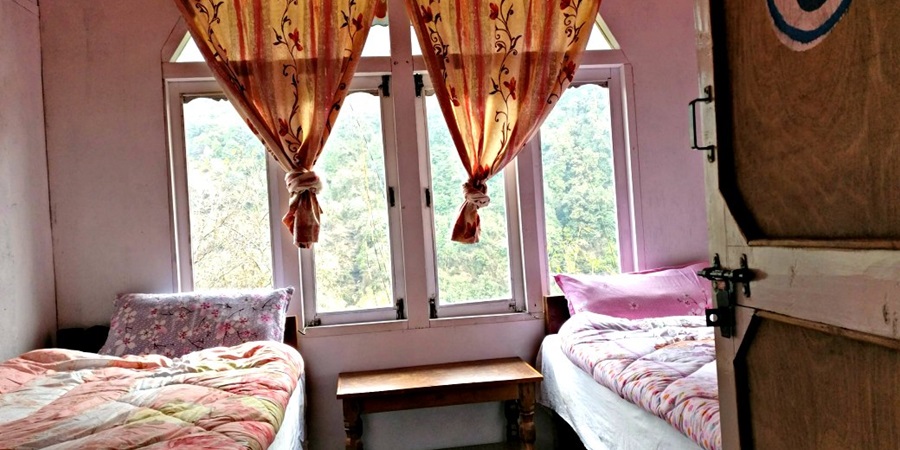
Homestays: Immerse in Tamang Culture
As you trek through various segments of the Langtang Valley, you’ll encounter traditional Tamang villages. Opting for a homestay in these areas offers a deep dive into local culture.
You’ll have the opportunity to experience traditional Tamang hospitality, savour authentic meals, and learn about their customs and way of life. Homestays are more than just a place to sleep; they’re a window into the heart of the region’s culture.
Camping: Connect with Nature
For those seeking an added adventure, Trek Nepal Himalayas Pvt Ltd offers a camping option for Langtang Valley trekking enthusiasts. This choice allows you to immerse yourself entirely in the natural beauty of the Himalayas.
Camping under the stars, you’ll wake up to incredible mountain vistas and experience the wilderness of Nepal up close. Remember to request this option when booking your trek to ensure a fully prepared and guided camping experience.

Each accommodation choice along the Langtang Valley Trek offers a different regional perspective. Whether you prefer the communal atmosphere of teahouses, the cultural immersion of homestays, or the adventurous spirit of camping, your journey through the Langtang Valley will surely be unforgettable.
Exploring the Culinary Delights of the Langtang Valley Trek
The Langtang Valley Trek, a fascinating journey into the heart of the Himalayas, offers scenic views and a rich culinary experience. The food you’ll encounter on your trek is an integral part of the adventure, providing sustenance and a glimpse into local culture. Here’s what to expect regarding dining during your trek to Langtang.
Local and International Flavors
A delightful aspect of the Langtang trek is the diverse range of cuisines. Teahouses and homestays along the trail serve a variety of dishes. You can savour traditional Nepali meals like ‘dal bhat’ – a hearty and replenishing dish, or choose from familiar international options such as pasta and pizza. This mix of local and global flavours ensures something for everyone, regardless of your taste preferences.
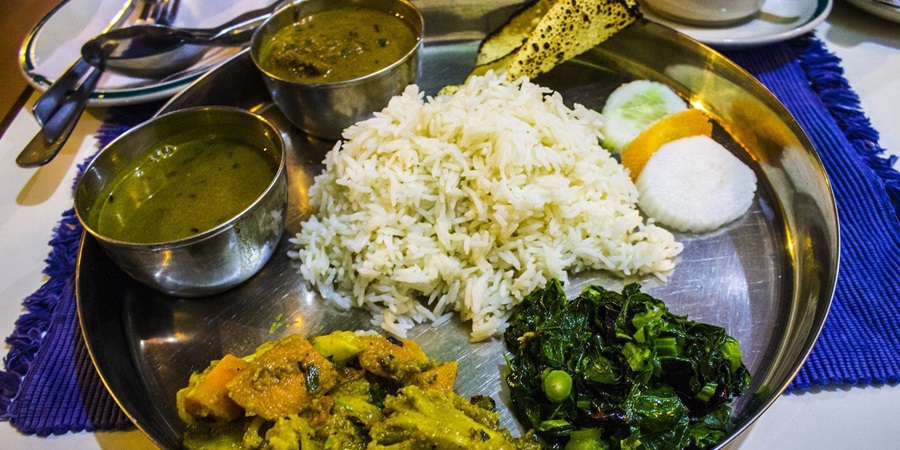
Freshness and Organic Quality
Given the trek’s remote nature, much of the food is locally sourced, guaranteeing freshness and organic quality. Ingredients are often harvested the same day, ensuring the meals are delicious and nutritionally rich – a vital factor when trekking in challenging environments like Langtang Valley.
Energizing Snacks for the Trail
When trekking in the rugged terrains of the Himalayas, maintaining energy levels is key. Along the Langtang Valley Trek, local shops offer a variety of high-energy snacks. These include dried fruits, nuts, and energy bars, perfect for keeping your energy up throughout the day.
Accommodating Dietary Restrictions
If you have specific dietary needs, it’s essential to communicate these when booking your Langtang Valley Trek with Trek Nepal Himalayas Pvt Ltd. They can make necessary arrangements to accommodate your dietary restrictions, ensuring a pleasant and worry-free dining experience during your trek.
Hassle-Free Dining with Trek Nepal Himalayas Pvt Ltd
Choosing Trek Nepal Himalayas Pvt Ltd for your Langtang trek means enjoying the convenience of an all-inclusive food package. This thoughtful arrangement takes the stress out of meal planning, allowing you to immerse yourself fully in the trekking experience.
The Langtang Valley Trek offers a culinary journey as enriching as the trek itself. From local delicacies to comforting international dishes and the assurance of fresh, organic ingredients, your trekking experience will be both flavorful and fulfilling.
Hydration Essentials for Your Langtang Valley Trek
Maintaining hydration is crucial during any high-altitude trek, particularly for those embarking on the Langtang Valley Trek. In the unique environment of the Himalayas, accessing safe drinking water is vital for a successful Langtang trek experience. Here are the best ways to ensure you stay hydrated throughout your journey.
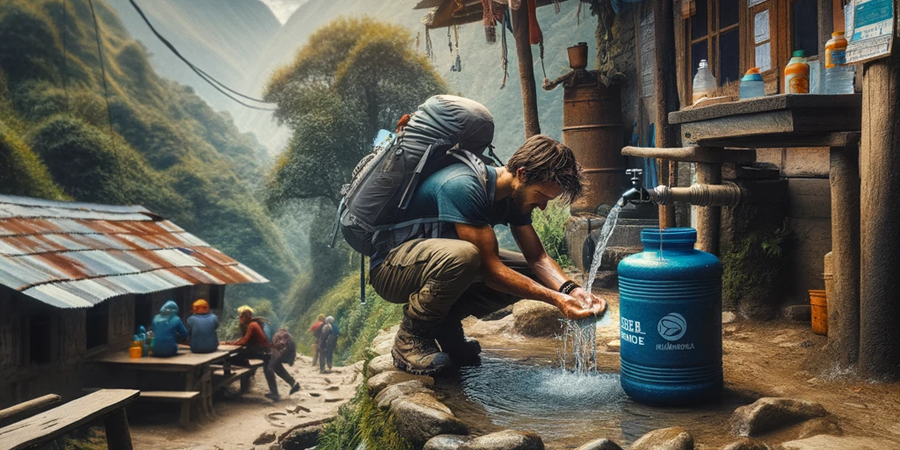
Boiled Water: A Staple on the Trek to Langtang
Teahouses along your trekking route typically offer boiled water. This is a safe and reliable option, as boiling effectively neutralizes most harmful organisms in the water. Opting for boiled water is a practical choice for trekkers heading to Langtang.
Packaged Mineral Water: Convenient but Costly
While trekking through the Langtang Valley, bottled mineral water is available at various stops. It’s a convenient but less environmentally friendly option and tends to become more expensive as you ascend.
Water Purification Tablets: Compact and Effective
Many trekkers on the Langtang Valley Trek opt for water purification tablets. These are efficient ways to purify water from natural sources, ensuring safe drinking water without the bulk of bottles.

Water Filtration Systems: Eco-Friendly Hydration
Consider a portable water filtration system for an environmentally conscious approach during Langtang Valley trekking. These systems allow you to safely use water from streams and rivers, reducing reliance on plastic bottles.
Proper hydration is vital for your health and enjoyment during the Langtang Valley Trek. Each option offers a balance of safety, environmental impact, and convenience, ensuring you can focus on the breathtaking beauty of your trek to Langtang.
Hot Shower Facilities During Your Langtang Valley Trek Experience
Experiencing the Langtang Valley Trek is not only about the journey through stunning landscapes but also about the small comforts that rejuvenate you, like a hot shower. While trekking to Langtang, knowing about the availability and nuances of hot shower facilities can significantly enhance your trekking experience. Here’s an informative guide on what to expect regarding hot showers during your Langtang trek.
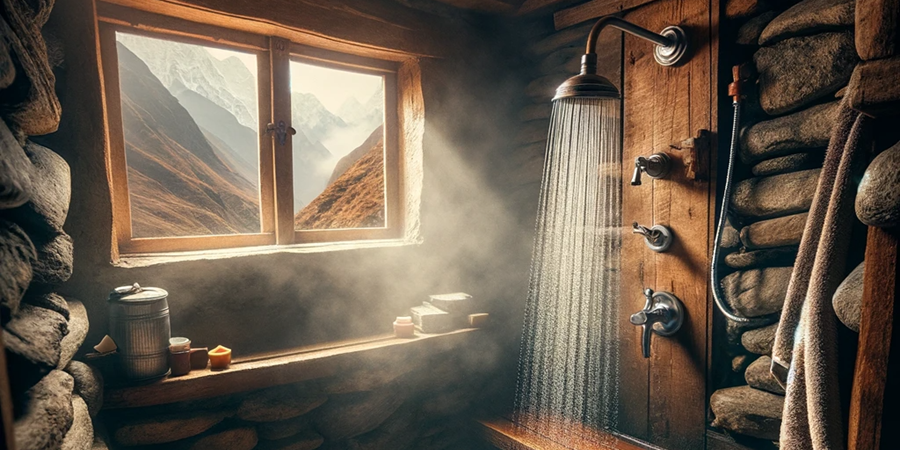
Teahouse Shower Facilities Along the Langtang Trek
As you navigate the trails of the Langtang Valley, you’ll find that most teahouses offer hot shower facilities. However, the availability and quality of these showers can vary.
Hot showers are more commonly found in lower elevations or larger villages and may be more reliable. As you ascend or in more remote teahouses, the availability might decrease due to logistical challenges. It’s always a good idea to inquire about hot shower facilities while booking your stay or upon arrival.
Sustainable Hot Showers: Solar-Powered Solutions
In line with sustainable trekking practices, many teahouses along the Langtang Valley trekking route have adopted solar-powered systems for heating water. This eco-friendly approach provides trekkers a warm shower and aligns with the region’s conservation efforts. Depending on weather conditions, solar showers offer a guilt-free way to relax and warm up.
Understanding the Costs of Hot Showers
Trekkers must note that hot showers in the Langtang Valley might cost extra. This is especially true in higher or more remote locations where heating water can be more challenging. The price for a hot shower typically ranges from 300 to 800 Nepali Rupees, varying by location and the facilities of the teahouse. Some teahouses might include this cost in their room rate, while others charge separately. It’s advisable to clarify these details to manage your expectations and budget accordingly.

Access to hot shower facilities can be a game-changer in enhancing your comfort during the Langtang Valley Trek. This simple amenity offers physical comfort after a day of trekking and provides a moment of relaxation, helping you recharge for the adventures ahead in the breathtaking Langtang region.
Toilet Facilities on the Langtang Valley Trek: What to Expect
When planning for the Langtang Valley Trek, it’s essential to consider the aspects of sanitation and hygiene. Understanding the toilet facilities available during this trek in Nepal’s Langtang region will help you prepare better and ensure a more comfortable experience. Here’s a guide on what to expect regarding toilets during your trek.
Teahouse Toilets: Simple and Functional
During your Langtang trek, teahouses will be your primary accommodation. The toilets in these teahouses are basic but functional. You’ll typically find a mix of Western-style flush toilets and traditional Asian squat toilets. While these facilities might not be as luxurious as those in urban hotels, they are maintained with cleanliness and functionality in mind. It’s a good idea to check the condition of toilet facilities while booking your stay at a teahouse.
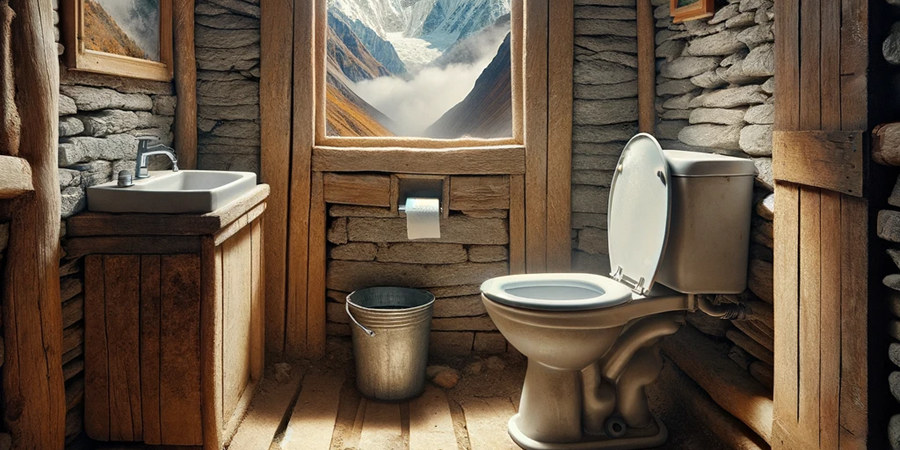
On the Trail: Limited but Practical Options
As you trek through the Langtang Valley, toilet facilities between teahouses can be sparse. In some areas, you might come across pit toilets, which are quite essential but serve the purpose. They offer privacy, which can be a relief in the wilderness. However, in more remote parts of the trek, you may need to rely on natural areas for your restroom needs. It’s essential to be prepared for trekking in a natural environment.
Essential Supplies to Carry
Whether you’re using the facilities at a teahouse or in the wild, bringing your supplies is crucial. Carrying your toilet paper and hand sanitiser is strongly recommended, as these items are not always provided or available, especially in more remote locations along the trek.
Understanding and preparing for the toilet facilities is essential for Langtang Valley Trek planning. While they may be crucial, these facilities are part of the authentic trekking experience in the Himalayas. Being prepared will help ensure that your focus remains on the breathtaking scenery and unique adventure the Langtang region offers.
Electricity and WiFi Availability During the Langtang Valley Trek
Embarking on the Langtang Valley Trek takes you through some of Nepal’s most stunning yet remote landscapes. While trekking in this region, it’s essential to know the availability and reliability of electricity and WiFi, as these modern conveniences can be limited.
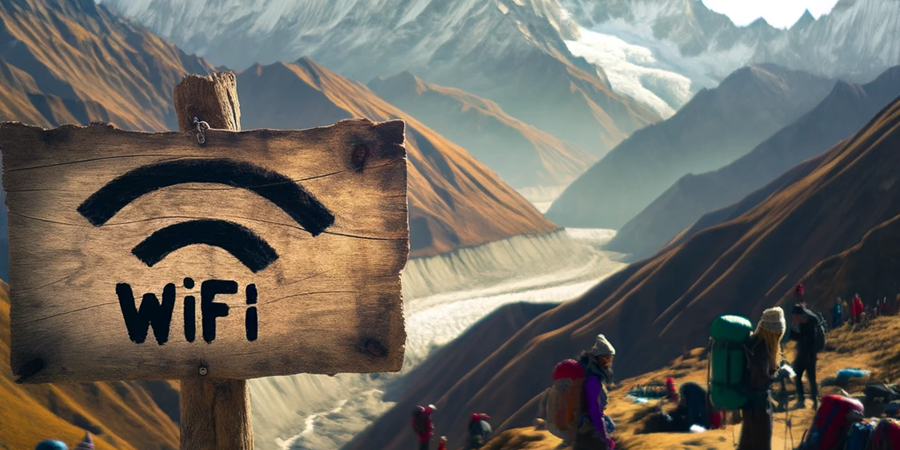
Electricity: Expect Intermittent Access
Throughout the Langtang trek, you’ll find that most teahouses offer electricity. However, due to the remote trek, the power supply can be intermittent. Power outages are common, so it’s wise to come prepared. Carrying extra batteries for your camera or a portable charger for your phone can ensure your devices stay powered.
Solar Power: An Eco-Friendly Alternative
To tackle the issue of intermittent electricity, many teahouses along the Langtang Valley Trek route have turned to solar power. This sustainable option supports the environment and can be more reliable than traditional power sources, especially in more secluded areas.

WiFi Connectivity: A Variable Luxury
As for internet access, WiFi is available in some of the teahouses, particularly those nearer to larger villages or trekking hubs. However, keep in mind that WiFi connectivity can vary greatly. In some locations, the connection might be reasonably stable, while in others, it can be slow or non-existent.
Be Prepared for Additional Costs
It’s important to note that electricity (for charging devices) and WiFi access usually come with an additional cost in the teahouses. The rates for these services can vary depending on the location and the facilities available. This extra cost is something to consider when planning your budget for the Langtang Valley Trek.
When trekking to Langtang, adjusting your expectations regarding electricity and WiFi is critical. These amenities, while available, might not be as consistent or reliable as you’re accustomed to. But remember, the slight disconnect can enhance your immersion in the Langtang region’s breathtaking natural beauty and cultural richness.
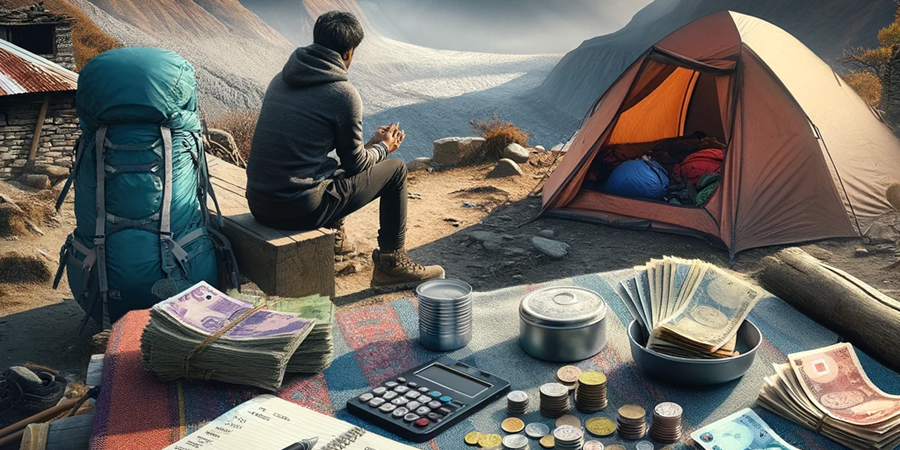
Ensuring Safety with Travel Insurance for the Langtang Valley Trek
Trekking to Langtang Valley is an adventure that promises breathtaking landscapes and a rich cultural experience. However, it’s essential to prepare for any unexpected situations. One of the critical preparations is securing comprehensive travel insurance for your trekking in Nepal journey. Here’s why travel insurance is crucial for the Langtang Valley Trek and what factors you should consider while choosing a policy.
Importance of Travel Insurance for Langtang Valley Trek
- High-Altitude Health Risks: Trekking in high-altitude areas like Langtang Valley poses unique health risks, including altitude sickness. Ensuring that your insurance covers such altitude-related health issues is vital.
- Emergency Evacuations: In cases of severe injury or acute health problems, emergency evacuation, possibly by helicopter, may be necessary. These evacuations can be exceedingly expensive, and having insurance coverage is critical.
- Protection for Gear and Personal Items: The rugged trekking environment can sometimes lead to damaged or lost gear. Travel insurance can cover repairing or replacing essential trekking equipment and personal items.
- Covering Trip Interruptions: The unpredictable nature of mountain weather can lead to trip delays or cancellations. A comprehensive travel insurance policy can reimburse you for these unforeseen changes in your plan.

Factors to Consider When Choosing Travel Insurance
- Altitude Coverage: Verify that your chosen policy provides coverage for the specific altitudes of the Langtang trek. Some policies have altitude limitations, so this detail is crucial.
- Policy Inclusions and Exclusions: Carefully review what is included and excluded in the policy, especially regarding trekking and adventure activities. This ensures clarity on what situations are covered.
- Local Medical Facility Coverage: Check whether your policy covers treatment at local health posts along the Langtang Valley or if it requires evacuation to a more equipped facility for any serious medical attention.
- Claim Process: Choose an insurer known for a straightforward and efficient claim process. A complicated claim process is the last thing you want to deal with during emergencies.
Securing the right travel insurance is a step towards a safer and more secure Langtang Valley Trek experience. It provides financial protection and peace of mind, allowing you to fully immerse yourself in the beauty and challenges of the Langtang trek.
Money Management During Your Langtang Valley Trek
Embarking on the Langtang Valley Trek is an adventure that takes you through some of Nepal’s most stunning landscapes. To fully enjoy this experience, managing your finances effectively is essential. Here’s a comprehensive guide on handling money, including information about ATMs and currency exchange, for your trek in the Langtang region.
ATM Accessibility in the Langtang Trek Area
- ATMs are available in Kathmandu, Syabrubesi, and Dhunche. It’s a good practice to withdraw enough cash in Kathmandu, as ATMs in Syabrubesi and Dhunche may not be as reliable and could have lower withdrawal limits.
- Reliability Issues: Once on the trek, ATM access becomes more limited. The few available may not always be operational due to power or connectivity problems.
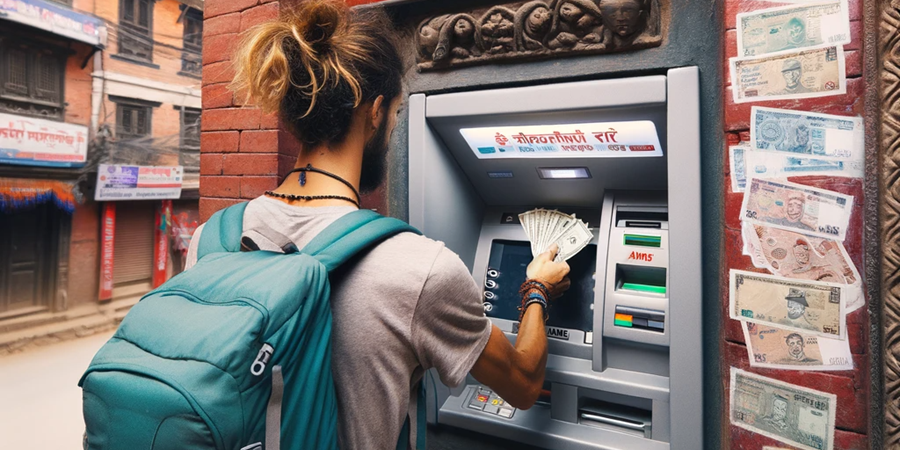
Money Exchange: Best Done in Kathmandu
- Favourable Exchange Rates: Kathmandu offers the best options for money exchange in terms of rates and availability. It’s advisable to exchange your currency here before starting your Langtang trek.
- Limited Options in Remote Areas: As you venture further into the Langtang Valley, money exchange facilities become scarce and offer less favourable rates.
Practical Tips for Money Management on the Trek
- Cash is King: In the Langtang region, cash is usually the most accepted form of payment. Some teahouses and local vendors may accept cards, but cash is more universally accepted and sometimes the only option.
- Budget for Additional Expenses: Always carry extra cash for unexpected expenses, such as additional meals, hot showers, or WiFi. These services often come with an extra charge in teahouses.
- Hidden Costs Awareness: Be mindful that specific amenities, like charging electronic devices or WiFi, may incur additional costs in teahouses.
- Consult with Trek Experts: To avoid financial surprises, discuss your budget and expected expenses with Trek Nepal Himalayas Pvt Ltd before commencing your trek. They can provide valuable insights into the typical costs and money management strategies during the trek.

Effective money management is vital to a stress-free Langtang Valley Trek experience. By being prepared with sufficient cash, understanding where and how to exchange currency, and budgeting for expected and unexpected costs, you can ensure a smooth and enjoyable trekking experience in the beautiful Langtang region.
FAQs about Langtang Valley Trek
The Langtang Valley Trek is considered moderate in terms of difficulty. It is suitable for both beginners with decent fitness and experienced trekkers.
The ideal times are during the pre-monsoon (March to May) and post-monsoon (September to November) seasons when the weather is clear and the mountain views are spectacular.
Trekkers need to obtain the Langtang National Park Entry Permit and the TIMS (Trekkers’ Information Management System) card.
The highest point on this trek is either Tserko Ri or Kyanjin Ri, both of which stand at over 4,970 meters above sea level.
While it’s possible to trek solo, it’s advisable to trek with a guide or in a group for safety reasons, especially in remote areas.
Most of the accommodations on the trek are teahouses or lodges. While they offer basic facilities, they provide a warm, local experience.
While the Langtang Valley Trek doesn’t go as high as some other Himalayan treks, altitude sickness can still be a concern. It’s crucial to acclimatize appropriately and be aware of the symptoms.
The itinerary typically includes acclimatization days. However, listening to your body and taking it slow is essential, especially when ascending to higher altitudes.
Drinking directly from streams is not recommended. It’s advisable to carry water purification tablets or a portable water purifier. Alternatively, you can buy bottled water or boiled water from the teahouses.
Some essentials are a good pair of hiking boots, warm clothing (that can be layered), rain gear, a sleeping bag, a backpack, and trekking poles. Remember, it’s always best to be prepared for all mountain weather conditions.
Reviews on Langtang Valley Trek
Be first to post a review in this trip.
